
The Color of Money: Black Banks and the Racial Wealth Gap
By: Mehrsa Baradaran
Format: 371 pages, Hardcover
“Read this book. It explains so much about the moment…Beautiful, heartbreaking work.” ―Ta-Nehisi Co…
Want to Read $ 12.92"Perhaps because the bank was identified with the endeavors of the newly freed negro, wrote historians Kindsor and Sagarin, anyone who dared to raise a cry against the mismanagement was charged with being anti-negro. In as much as the enemies of the negro were not interested in the bank, and the friends were effectively silenced with the anti-negro charge, there was no exposure of the condition of the bank. The belief that the failures of black institutions could not be accurately studied because of the sensitivity of the race issue, whether accurate or not, would be a recurring theme through history."-Mehrsa Baradaran, The Color of Money: Black Banks and the Racial Wealth Gap
"Perhaps because the bank was identified with the endeavors of the newly freed negro, wrote historians Kindsor and Sagarin, anyone who dared to raise a cry against the mismanagement was charged with being anti-negro. In as much as the enemies of the negro were not interested in the bank, and the friends were effectively silenced with the anti-negro charge, there was no exposure of the condition of the bank. The belief that the failures of black institutions could not be accurately studied because of the sensitivity of the race issue, whether accurate or not, would be a recurring theme through history."-Mehrsa Baradaran, The Color of Money: Black Banks and the Racial Wealth Gap
"Perhaps because the bank was identified with the endeavors of the newly freed negro, wrote historians Kindsor and Sagarin, anyone who dared to raise a cry against the mismanagement was charged with being anti-negro. In as much as the enemies of the negro were not interested in the bank, and the friends were effectively silenced with the anti-negro charge, there was no exposure of the condition of the bank. The belief that the failures of black institutions could not be accurately studied because of the sensitivity of the race issue, whether accurate or not, would be a recurring theme through history."-Mehrsa Baradaran, The Color of Money: Black Banks and the Racial Wealth Gap
"The scheme began to unravel following the Panic of 1873 when railroad investments failed. The bank experienced several runs at the height of the panic. The panic would not have affected the bank if it had been a savings bank, but by 1866, the business of the bank had become…reckless speculation, over-capitalization, stock manipulation, intrigue and bribery, and downright plundering…. In a last ditch effort to save the bank, the Trustees appointed Frederick Douglas as Bank President in March of 1874. Douglass did not ask to be nominated and the Bank Board knew that Douglass had no experience in banking, but they felt that his reputation and popularity would restore confidence to fleeing depositors….Douglas lent the bank $10,000 of his own money to cover the bank’s illiquid assets….Douglass quickly discovered that the bank was full of dead men’s bones, rottenness and corruption. As soon as Douglass realized that the bank was headed towards certain failure, he imposed drastic spending cuts to limit depositors’ losses. He then relayed this information to Congress, underscoring the bank’s insolvency, and declaring that he could no longer ask his people to deposit their money in it. Despite the other Trustees’ attempts to convince Congress otherwise, Congress sided with Douglass, and on June 20, 1874, Congress amended the Charter to authorize the Trustees to end operations. Within a few weeks’ time, the bank’s doors were shut for good on June 29, 1874, leaving 61,131 depositors without access to nearly $3 million dollars in deposits. More than half of accumulated black wealth disappeared through the mismanagement of the Freedman’s Savings Bank. And what is most lamentable…is the fact that only a few of those who embezzled and defrauded the one-time liquid assets of this bank were ever prosecuted….Congress did appoint a commission led by John AJ Cresswell to look into the failure and to recover as much of the deposits as possible. In 1880, Henry Cook testified about the bank failure and said that bank’s depositors were victims of a widespread universal sweeping financial disaster. In other words, it was the Market’s fault, not his. The misdeeds of the bank’s management never came to light."-Mehrsa Baradaran, The Color of Money: Black Banks and the Racial Wealth Gap
If you liked the audiobook plot in The Color of Money: Black Banks and the Racial Wealth Gap by Mehrsa Baradaran , here is a list of 15 books like this:

1. The Color of Law: A Forgotten History of How Our Government Segregated America
By: Richard Rothstein
Format: None pages, Hardcover
In this groundbreaking history of the modern American metropolis, Richard Rothstein, a leading auth… read more
Want to ReadSimilar categories in Richard Rothstein's The Color of Law: A Forgotten History of How Our Government Segregated America book and Mehrsa Baradaran's The Color of Money: Black Banks and the Racial Wealth Gap
- race
- history
- politics
- nonfiction
- social justice
- anti racist
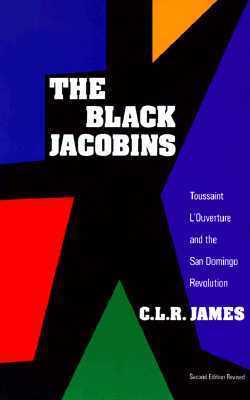
2. The Black Jacobins: Toussaint L'Ouverture and the San Domingo Revolution
By: C.L.R. James
Format: 160 pages, Paperback
A classic and impassioned account of the first revolution in the Third World. This powerful, intens… read more
Want to ReadSimilar categories in C.L.R. James's The Black Jacobins: Toussaint L'Ouverture and the San Domingo Revolution book and Mehrsa Baradaran's The Color of Money: Black Banks and the Racial Wealth Gap
- politics
- race
- history
- nonfiction
3. The New Jim Crow: Mass Incarceration in the Age of Colorblindness
By: Michelle Alexander
Format: None pages, Hardcover
"As the United States celebrates the nation's 'triumph over race' with the election of Barack Obama… read more
Want to ReadSimilar categories in Michelle Alexander's The New Jim Crow: Mass Incarceration in the Age of Colorblindness book and Mehrsa Baradaran's The Color of Money: Black Banks and the Racial Wealth Gap
4. How Markets Fail: The Logic of Economic Calamities
By: John Cassidy
Format: 256 pages,
How Markets Failoffers a new, enlightening way to understand the force of the irrational in our vol… read more
Want to ReadSimilar categories in John Cassidy's How Markets Fail: The Logic of Economic Calamities book and Mehrsa Baradaran's The Color of Money: Black Banks and the Racial Wealth Gap
5. The Half Has Never Been Told: Slavery and the Making of American Capitalism
By: Edward E. Baptist
Format: 132 pages, Hardcover
Americans tend to cast slavery as a pre-modern institution--the nation's original sin, perhaps, but… read more
Want to ReadSimilar categories in Edward E. Baptist's The Half Has Never Been Told: Slavery and the Making of American Capitalism book and Mehrsa Baradaran's The Color of Money: Black Banks and the Racial Wealth Gap

6. Black AF History: The Un-Whitewashed Story of America
By: Michael Harriot
Format: 432 pages, Hardcover
From acclaimed columnist and political commentator Michael Harriot, a searingly smart and bitingly… read more
Want to Read $ 13.99Similar categories in Michael Harriot's Black AF History: The Un-Whitewashed Story of America book and Mehrsa Baradaran's The Color of Money: Black Banks and the Racial Wealth Gap
- race
- history
- politics
- nonfiction
- social justice
- audiobook
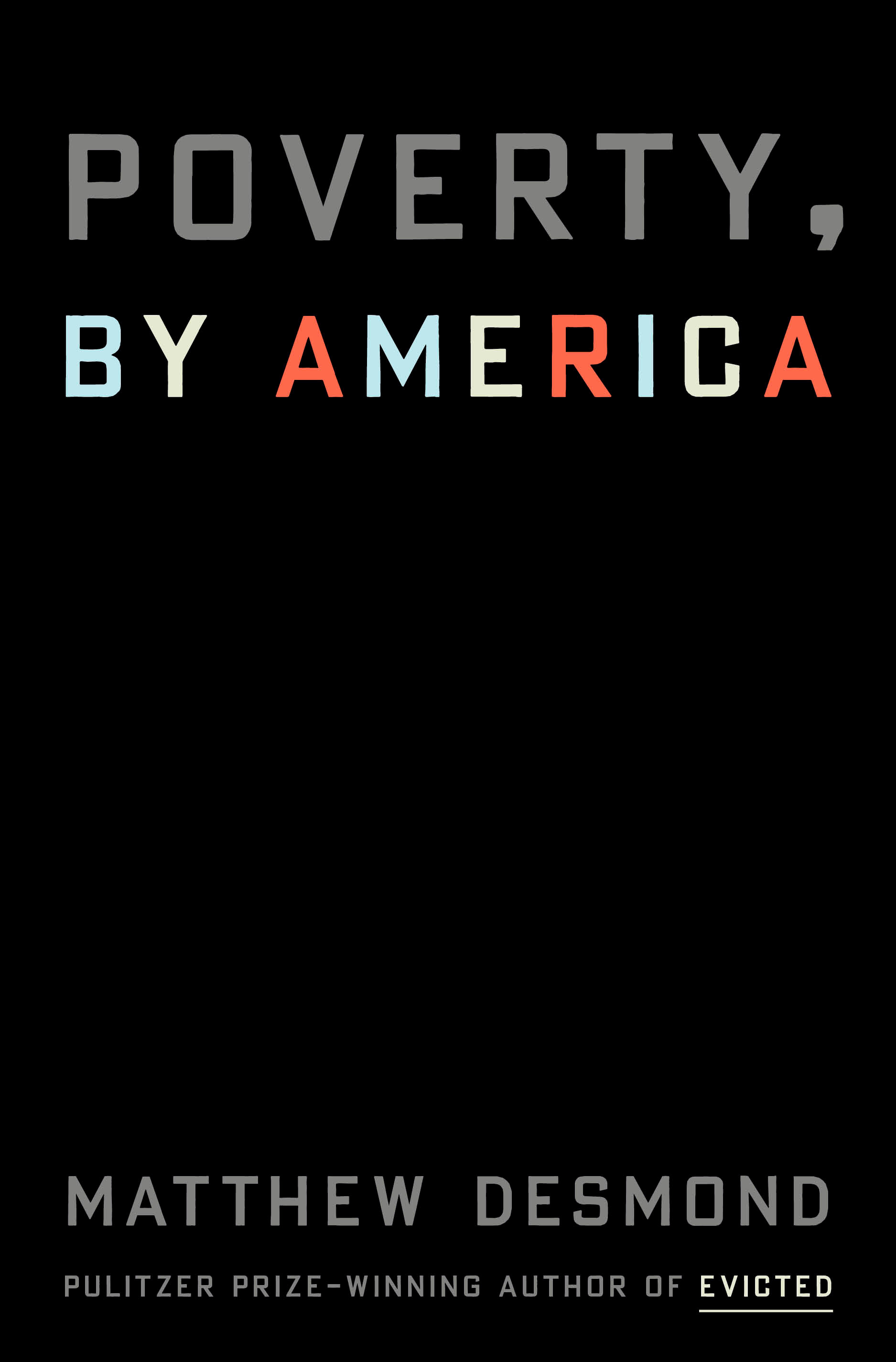
7. Poverty, by America
By: Matthew Desmond
Format: 284 pages, Hardcover
Reimagining the debate on poverty, making a new and bracing argument about why it persists in Ameri… read more
Want to Read $ 13.99Similar categories in Matthew Desmond's Poverty, by America book and Mehrsa Baradaran's The Color of Money: Black Banks and the Racial Wealth Gap
- history
- politics
- nonfiction
- social justice
- economics
- sociology
- audiobook
"To live and strive in modern America is to participate in a series of morally fraught systems. If a family’s entire financial livelihood depends on the value of its home, it’s not hard to understand …"-Matthew Desmond, Poverty, by America
"The rest of us, on the ·other hand-we members of the protected classes-have grown increasingly· dependent on our welfare programs. In 2020 the federal government spent more than $193 billion on homeo…"-Matthew Desmond, Poverty, by America
"In her book The Government-Citizen Disconnect, the political scientist Suzanne Mettler reports that 96 percent of American adults have relied on a major government program at some point in their live…"-Matthew Desmond, Poverty, by America

8. Elite Capture: How the Powerful Took Over Identity Politics (And Everything Else)
By: Olúfẹ́mi O. Táíwò
Format: 157 pages, Paperback
A powerful indictment of the ways elites have co-opted radical critiques of racial capitalism to se… read more
Want to Read $ 11.30Similar categories in Olúfẹ́mi O. Táíwò's Elite Capture: How the Powerful Took Over Identity Politics (And Everything Else) book and Mehrsa Baradaran's The Color of Money: Black Banks and the Racial Wealth Gap
- race
- history
- politics
- nonfiction
- social justice
- sociology
- audiobook
"A philosopher Briana Toole clarifies, by itself, one's social location only puts a person in a position to know; 'epistemic privilege' or advantage, on the other hand, is achieved only through delibe…"-Olúfẹ́mi O. Táíwò, Elite Capture: How the Powerful Took Over Identity Politics (And Everything Else)
"Elites do often make the environment worse and block solutions, but to blame the problem of elite capture entirely on their moral successes and failures is to confuse effect for cause. The true probl…"-Olúfẹ́mi O. Táíwò, Elite Capture: How the Powerful Took Over Identity Politics (And Everything Else)
"To opt for deference, rather than interdependence, may soothe short-term psychological wounds. But it does so at a steep cost: it may undermine the goals that motivated the project--and it entrenches…"-Olúfẹ́mi O. Táíwò, Elite Capture: How the Powerful Took Over Identity Politics (And Everything Else)
"As Carter G. Woodson realized, many of our decisions are shaped by decisions that someone with more power made before us. The whole social structure affects how institutional systems, like schools, f…"-Olúfẹ́mi O. Táíwò, Elite Capture: How the Powerful Took Over Identity Politics (And Everything Else)
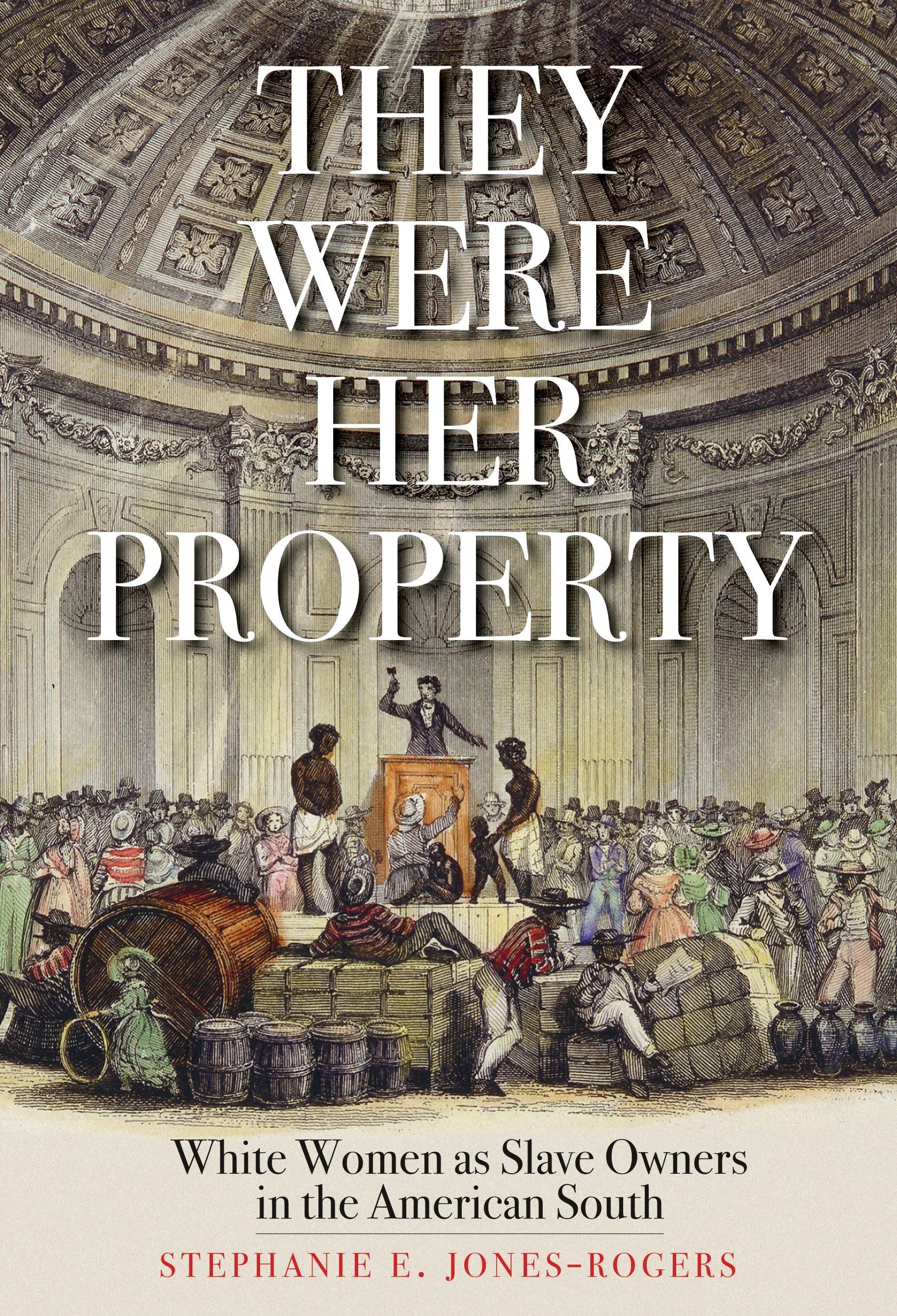
9. They Were Her Property: White Women as Slave Owners in the American South
By: Stephanie E. Jones-Rogers
Format: 320 pages, Hardcover
A bold and searing investigation into the role of white women in the American slave economy Bri… read more
Want to Read $ 13.84Similar categories in Stephanie E. Jones-Rogers's They Were Her Property: White Women as Slave Owners in the American South book and Mehrsa Baradaran's The Color of Money: Black Banks and the Racial Wealth Gap
- race
- history
- politics
- nonfiction
- social justice
- anti racist
- audiobook
"Historians who explore slavery's relationship to capitalism generally focus on the roles that men played in the development of both. But if we considered the very real possibility that some of the en…"-Stephanie E. Jones-Rogers, They Were Her Property: White Women as Slave Owners in the American South

10. Black Fortunes: The Story of the First Six African Americans Who Escaped Slavery and Became Millionaires
By: Shomari Wills
Format: 320 pages, ebook
Between the years of 1830 and 1927, as the last generation of blacks born into slavery was reaching… read more
Want to Read $ 14.99Similar categories in Shomari Wills's Black Fortunes: The Story of the First Six African Americans Who Escaped Slavery and Became Millionaires book and Mehrsa Baradaran's The Color of Money: Black Banks and the Racial Wealth Gap
- race
- history
- nonfiction
- business
- audiobook

11. The Color of Money: Black Banks and the Racial Wealth Gap
By: Mehrsa Baradaran
Format: 371 pages, Hardcover
“Read this book. It explains so much about the moment…Beautiful, heartbreaking work.” ―Ta-Nehisi Co… read more
Want to Read $ 12.92Similar categories in Mehrsa Baradaran's The Color of Money: Black Banks and the Racial Wealth Gap book and Mehrsa Baradaran's The Color of Money: Black Banks and the Racial Wealth Gap
- race
- history
- politics
- economics
- nonfiction
- social justice
- anti racist
- sociology
- business
- audiobook
"Perhaps because the bank was identified with the endeavors of the newly freed negro, wrote historians Kindsor and Sagarin, anyone who dared to raise a cry against the mismanagement was charged with b…"-Mehrsa Baradaran, The Color of Money: Black Banks and the Racial Wealth Gap
"The scheme began to unravel following the Panic of 1873 when railroad investments failed. The bank experienced several runs at the height of the panic. The panic would not have affected the bank if i…"-Mehrsa Baradaran, The Color of Money: Black Banks and the Racial Wealth Gap

12. Young Queens: Three Renaissance Women and the Price of Power
By: Leah Redmond Chang
Format: 416 pages, Hardcover
The boldly original, dramatic intertwined story of Catherine de’ Medici, Elisabeth de Valois, and M… read more
Want to Read $ 12.99Similar categories in Leah Redmond Chang's Young Queens: Three Renaissance Women and the Price of Power book and Mehrsa Baradaran's The Color of Money: Black Banks and the Racial Wealth Gap
- nonfiction
- history
- audiobook

13. The Palestine Laboratory: How Israel Exports the Technology of Occupation Around the World
By: Antony Loewenstein
Format: 320 pages, Paperback
Bestselling journalist Antony Loewenstein uncovers the widespread commercialisation and brutal depl… read more
Want to Read $ 7.39Similar categories in Antony Loewenstein's The Palestine Laboratory: How Israel Exports the Technology of Occupation Around the World book and Mehrsa Baradaran's The Color of Money: Black Banks and the Racial Wealth Gap
- history
- politics
- nonfiction
- economics
- audiobook

14. Preparing for War: The Extremist History of White Christian Nationalism—and What Comes Next
By: Bradley Onishi
Format: 237 pages, Hardcover
Watching the eerie footage of the January 6 insurrection, Bradley Onishi wondered: If I hadn't left… read more
Want to Read $ 18.99Similar categories in Bradley Onishi's Preparing for War: The Extremist History of White Christian Nationalism—and What Comes Next book and Mehrsa Baradaran's The Color of Money: Black Banks and the Racial Wealth Gap
- race
- history
- politics
- nonfiction
- sociology
- audiobook

15. When Crack Was King: A People's History of a Misunderstood Era
By: Donovan X. Ramsey
Format: 448 pages, Hardcover
A kaleidoscopic account of the crack cocaine era and a community’s ultimate resilience, told throug… read more
Want to Read $ 13.99Similar categories in Donovan X. Ramsey's When Crack Was King: A People's History of a Misunderstood Era book and Mehrsa Baradaran's The Color of Money: Black Banks and the Racial Wealth Gap
- race
- history
- politics
- nonfiction
- social justice
- sociology
- audiobook
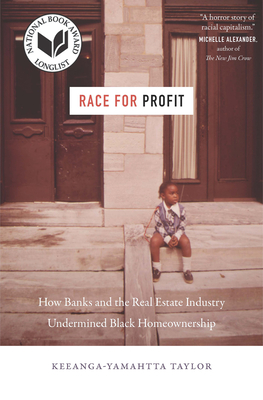
16. Race for Profit: How Banks and the Real Estate Industry Undermined Black Homeownership (Justice, Power, and Politics)
By: Keeanga-Yamahtta Taylor
Format: 368 pages, Hardcover
By the late 1960s and early 1970s, reeling from a wave of urban uprisings, politicians finally work… read more
Want to Read $ 9.99Similar categories in Keeanga-Yamahtta Taylor's Race for Profit: How Banks and the Real Estate Industry Undermined Black Homeownership (Justice, Power, and Politics) book and Mehrsa Baradaran's The Color of Money: Black Banks and the Racial Wealth Gap
- race
- history
- politics
- economics
- nonfiction
- social justice
- anti racist
- sociology
- audiobook
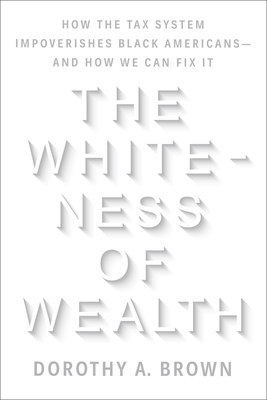
17. The Whiteness of Wealth: How the Tax System Impoverishes Black Americans—And How We Can Fix It
By: Dorothy A. Brown
Format: 288 pages, Hardcover
A groundbreaking exposé of racism in the American taxation system from a law professor and expert o… read more
Want to Read $ 14.99Similar categories in Dorothy A. Brown's The Whiteness of Wealth: How the Tax System Impoverishes Black Americans—And How We Can Fix It book and Mehrsa Baradaran's The Color of Money: Black Banks and the Racial Wealth Gap
- race
- history
- politics
- economics
- nonfiction
- social justice
- anti racist
- audiobook
"Once again, a single sentence would hold the key. I found it in The Economic Status of Black Women: An Exploratory Investigation, a 1990 staff report of the U.S. Commission on Civil Rights: On averag…"-Dorothy A. Brown, The Whiteness of Wealth: How the Tax System Impoverishes Black Americans—And How We Can Fix It

18. Homelessness Is a Housing Problem: How Structural Factors Explain U.S. Patterns
By: Gregg Colburn
Format: 284 pages, Hardcover
Using rich and detailed data, this groundbreaking book explains why homelessness has become a crisi… read more
Want to Read $ 20.99Similar categories in Gregg Colburn's Homelessness Is a Housing Problem: How Structural Factors Explain U.S. Patterns book and Mehrsa Baradaran's The Color of Money: Black Banks and the Racial Wealth Gap
- politics
- nonfiction
- social justice
- economics
- sociology
- audiobook

19. When the Clock Broke: Con Men, Conspiracists, and How America Cracked Up in the Early 1990s
By: John Ganz
Format: 432 pages, Hardcover
A lively, revelatory look back at the convulsions at the end of the Reagan era―and their dark legac… read more
Want to Read $ 14.99Similar categories in John Ganz's When the Clock Broke: Con Men, Conspiracists, and How America Cracked Up in the Early 1990s book and Mehrsa Baradaran's The Color of Money: Black Banks and the Racial Wealth Gap
- history
- politics
- nonfiction
- economics
- audiobook
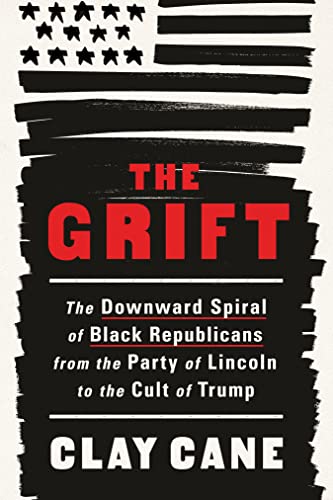
20. The Grift: The Downward Spiral of Black Republicans from the Party of Lincoln to the Cult of Trump
By: Clay Cane
Format: 400 pages, Hardcover
Part history and part cultural analysis, The Grift chronicles the nuanced history of Black Republic… read more
Want to Read $ 8.57Similar categories in Clay Cane's The Grift: The Downward Spiral of Black Republicans from the Party of Lincoln to the Cult of Trump book and Mehrsa Baradaran's The Color of Money: Black Banks and the Racial Wealth Gap
- race
- history
- politics
- nonfiction
- audiobook

21. The White Wall: How Big Finance Bankrupts Black America
By: Emily Flitter
Format: None pages, Audiobook
A deeply reported, “important, and infuriating” (The Guardian) look at the systemic racism inside t… read more
Want to ReadSimilar categories in Emily Flitter's The White Wall: How Big Finance Bankrupts Black America book and Mehrsa Baradaran's The Color of Money: Black Banks and the Racial Wealth Gap
- race
- history
- politics
- nonfiction
- economics
- business



